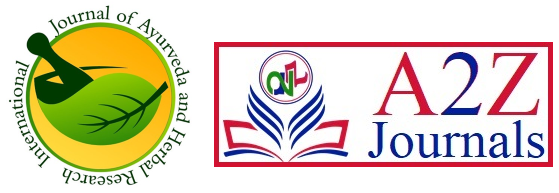Preparation of Godanti Bhasma (Gypsum) by Muffle Furnace Using Traditional Method W.S.R. Rastarangini and its Comparative Physico Chemical Analysis
B. Rudrapuri M.1*, Mohan G.2, Momin A.3, Patil J.4
DOI: 10.54060/ijahr.v1i1.2
1* Mahantesh B. Rudrapuri, Professor and HoD, Department of Post Graduate Studies in Rasashastra and Bhaishajya Kalpana, Shri Shivayogeeshwar Rural Ayurvedic Medical College and Hospital, Inchal, Belgavi, Belgaum, Karnataka, India.
2 G Vinay Mohan, Professor and HoD, Department of Post Graduate Studies in Kaya Chikitsa, Shri Shivayogeeshwar Rural Ayurvedic Medical College and Hospital, Inchal, Belgavi, Belgaum, Karnataka, India.
3 Asif Momin, Scholar, Department of Post Graduate Studies in Rasashastra and Bhaishajya Kalpana, Shri Shivayogeeshwar Rural Ayurvedic Medical College and Hospital, Inchal, Belgavi, Belgaum, Karnataka, India.
4 Jyotiba P Patil, Scholar, Department of Post Graduate Studies in Rasashastra and Bhaishajya Kalpana, Shri Shivayogeeshwar Rural Ayurvedic Medical College and Hospital, Inchal, Belgavi, Belgaum, Karnataka, India.
Abstract: The Godanti comes under Sudha varga (Calcium compounds). It was first described by Ras tarangini (Ayurveda pharmaceutics) in a recent book on Rasashastra. Another book named Rasamritam also explained Godanti. Godanti is an easy to identify, non-controversial and easily available drug. Both the bhasma tested for different test like XRD, inorganic elements, Ash, pH , Particle size , Organoleptic test, Calcium percentages etc. the bhasma prepared by both method shows near about same results.The Godanti bhasma prepared by both the method has same analytical results but the Bhasma prepared by traditional method need more time and it is laborous than the bhasma prepared by Furnace method.
Keywords: Godanti, Rasashastra, Bhasma, Ayurveda
| Corresponding Author | How to Cite this Article | To Browse |
|---|---|---|
| , Professor and HoD, Department of Post Graduate Studies in Rasashastra and Bhaishajya Kalpana, Shri Shivayogeeshwar Rural Ayurvedic Medical College and Hospital, Inchal, Belgavi, Belgaum, Karnataka, India. Email: |
Mahantesh B. Rudrapuri, G Vinay Mohan, Asif Momin, Jyotiba P Patil, Preparation of Godanti Bhasma (Gypsum) by Muffle Furnace Using Traditional Method W.S.R. Rastarangini and its Comparative Physico Chemical Analysis. IJAHR. 2023;1(1):6-14. Available From https://ahr.a2zjournals.com/index.php/ahr/article/view/2/version/2 |


 ©
©